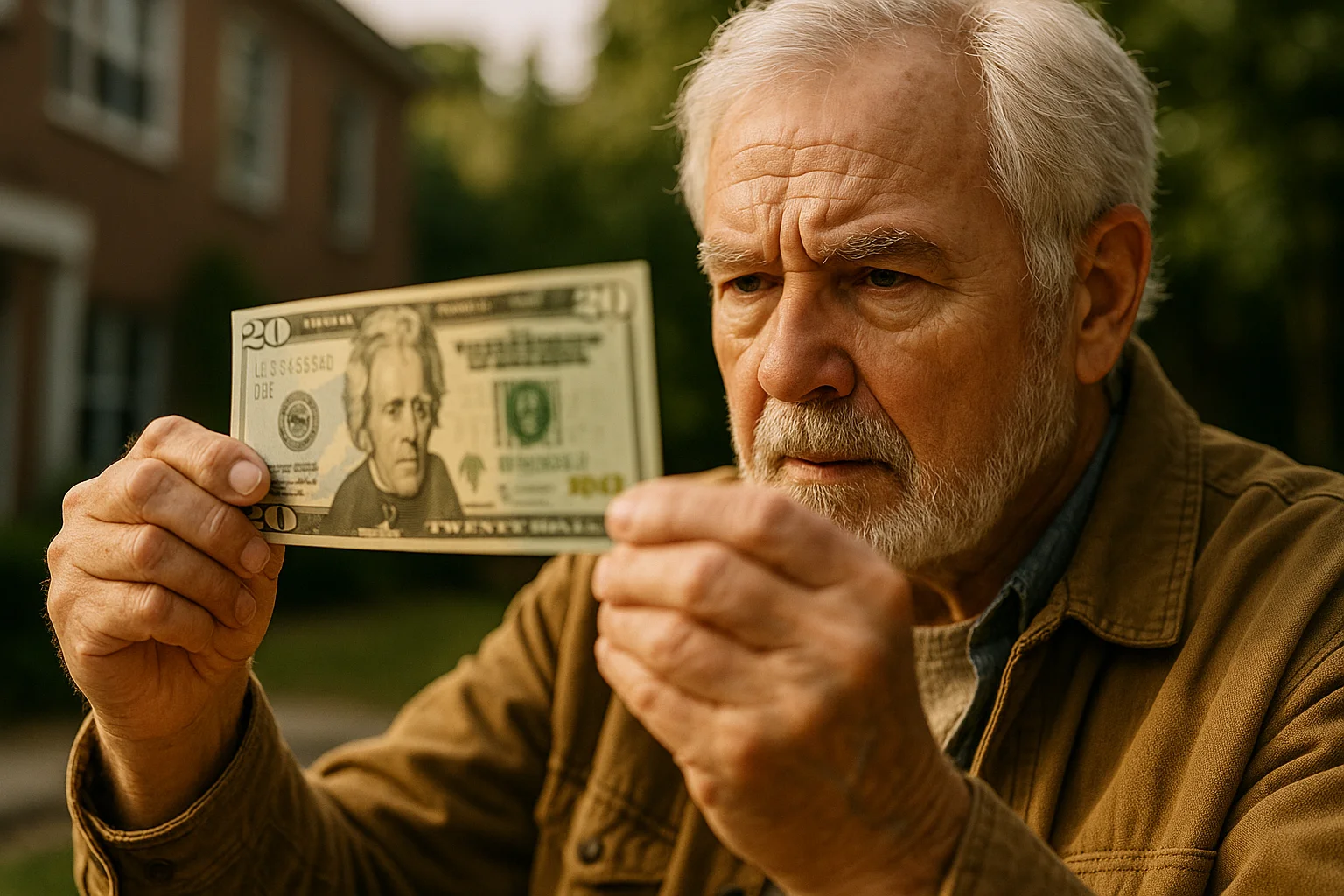$20 Bill: Past, Present, and Future of America’s Most Popular Banknote
For most people in the United States, the 20 dollar bill is the banknote they see the most. Walk up to an ATM, and chances are that’s the denomination it will spit out. Hand over cash at a store, and the cashier often expects to receive a twenty. It’s become the “workhorse” of American paper money: not as small as a $1 or $5, but not as bulky as a $50 or $100so, the bill has become deeply used in daily life.
However, despite these famous facts, the twenty hides a big story. Thus, over nearly two centuries, it has changed designs, carried political weight, and even sparked national debates. Behind its green ink and security features lie rare versions, unusual printings, and cultural shifts that make it far more than just another piece of paper.
The Face on the Twenty
What makes the $20 bill especially interesting is the portrait it carries. Faces on U.S. currency are never chosen at random. They reflect the values (or controversies) of their time.
Andrew Jackson’s Rise to the Bill
The seventh president of the United States, Andrew Jackson (1829–1837), has appeared on the $20 bill since 1928. His populist image, military reputation, and appeal to ordinary Americans made him a strong candidate during that era. The choice wasn’t without irony, though Jackson was famously suspicious of centralized banking, yet his face became tied to federal currency.
Politics in Design
Over the decades, the decision to keep or replace Jackson has sparked debates. Critics point to his role in policies like the forced relocation of Native Americans, while supporters highlight his role as a symbol of democracy’s expansion. Banknote design, as it turns out, isn’t just art—it’s politics in paper form.
The Harriet Tubman Plan
In 2016, the U.S. Treasury announced that abolitionist and Underground Railroad conductor Harriet Tubman would replace Jackson on the front of the bill. For many people this step was symbolic, recognizing a woman and an African American on a widely used denomination. But delays followed, tied to political shifts and technical reasons. As of today, the redesign is still discussed, and talks around it remain heated.

Rare Runs, Misprints, and the Old Notes Still Around
The story of the bill doesn’t stop at design debates. Some twenties carry extra intrigue because of how few were made, the type of seal they bear, or unusual quirks that slipped past the printing presses. Others, at the same time, are of interest to collectors simply because they’ve survived in use for decades.
Rare Series and Special Issues
Not all twenties are the same. Over the years, the Treasury has released notes that collectors still chase today:
Red Seal Notes (United States Notes): These carried a bright red seal and were once backed by the government’s credit rather than a reserve bank. They’re long gone from circulation but prized when found in good condition.
Blue Seal Notes (Silver Certificates): Issued up until the 1960s, these were once redeemable in silver. They stand out immediately with their bold blue seal.
Gold Certificates: With a seal that appeared yellow or gold, these notes were linked directly to gold reserves until they were withdrawn in the 1930s. Today they’re scarce, especially in higher grades.
Low-run Federal Reserve Notes: Even ordinary green-seal bills can become collectible if the production run was unusually small.
Another detail that makes a note more than just face value is its serial number. Bills with repeating digits, ascending or descending “ladders” (like 12345678 or 87654321); or “radar” (read the same backward and forward, like 12344321) numbers that read the same forward and backward (like 12344321) often attract collectors. “Star notes” marked with a star at the end of the serial, are replacements for misprinted notes and appear in much smaller numbers.
Printing Errors and Quirky Survivors
While the Bureau of Engraving and Printing keeps tight control, mistakes happen. Most flawed sheets are destroyed, but a handful escape into circulation. These errors create some of the most talked-about twenties on the market.
Error type | What it looks like | Why it’s valuable |
Double-denomination | The front shows $20, the back another value | Extremely rare, headline-grabbing when one surfaces |
Misaligned print | The design is shifted noticeably off-center | Eye-catching and uncommon |
Missing print | One side left blank or missing elements | Scarce because defects are usually caught early |
Ink smears or obstructions | Blotches or partial images | Each note looks unique |
Because error notes are so unusual, they are quickly pulled when discovered. That’s why finding one in everyday change is nearly impossible but not unheard of.
Older Twenties Still in Circulation
Every so often, someone gets change and finds a bill that looks a little “off”. Maybe the portrait is larger, the paper a slightly different shade, or the colors less vivid. These are often twenties from the mid-20th century, before the wave of modern security upgrades. They lack the color-shifting ink, the security thread, and the faint background tints we take for granted today.
While still legal tender, many older notes are worth saving rather than spending. They tell the story of changing styles in U.S. currency and reflect a time when banknotes were simpler but also easier to counterfeit. Spotting one in your wallet is like catching a glimpse of history — proof that not all the old bills have disappeared into safes and collections.
Guarding Against Fakes
Out of all U.S. banknotes, the $20 bill is one of the most counterfeited. There’s a simple reason: it’s valuable enough to be worth faking, but not so large that it raises suspicion in everyday use. Walk into a store with $100, and the cashier may hold it up to the light or check it with a marker. Hand over a $20, and chances are it slides right into the till. That combination of convenience and value makes the “twenty” a favorite target for counterfeiters.
Government agencies have noted that a high percentage of fake bills seized in circulation are twenties. While exact numbers vary year to year, the pattern is clear: if counterfeit money is being made, odds are the $20 will be part of the story.
To stay ahead, modern bills include a range of security features:
Watermark: Andrew Jackson’s portrait appears when you hold the bill up to the light.
Security thread: A thin strip embedded in the paper glows under ultraviolet light.
Microprinting: Tiny words hidden around the portrait and borders, too small to copy with ordinary printers.
Color-shifting ink: The large “20” on the bottom corner changes from copper to green when tilted.
For everyday users, checking a bill doesn’t require special tools. A quick glance at the watermark, tilting the note for the shifting ink, or running your finger across the surface to feel the raised printing can all help confirm authenticity. These simple steps make it harder for counterfeit bills to go unnoticed.

The Twenty’s Next Chapter
The story of the $20 bill isn’t finished. For years, there have been discussions about redesigning the note and replacing Andrew Jackson’s portrait with Harriet Tubman. Although the change has been delayed, the conversation itself shows how deeply Americans connect with their currency. A bill is never just paper — it carries identity, symbolism, and memory.
Looking ahead, the twenty may see new security upgrades too, from advanced holograms to improved color layers or even digital-style protections. Each step reflects not just technology’s progress but society’s desire to protect the integrity of money.
And modern collectors, as well as all curious users can explore these numismatic nuances easier than ever using technology. For example, apps like Coin ID Scanner let people quickly check unusual serial numbers or spot bills with potential collector value. While coins often get the spotlight, paper money like the bill has its own fascinating stories waiting to be uncovered.
One thing is certain: the twenty will remain more than just change in your wallet, but a part of living history, and its future will be every bit as intriguing as its past.



